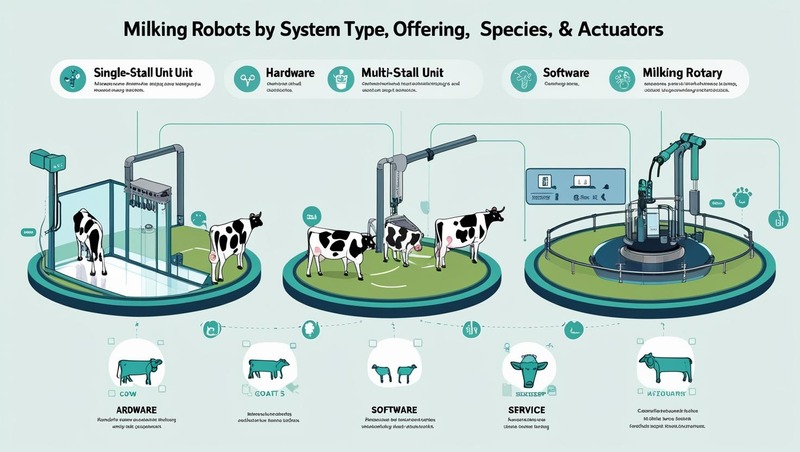The global milking robots market is experiencing significant growth, driven by rising demand for automation in the dairy industry. As the agriculture sector increasingly embraces smart farming techniques, milking robots are gaining traction for their ability to enhance efficiency, reduce labor dependency, and ensure consistent milk production. The global milking robots market size is projected to grow from USD 3.2 billion in 2024 to USD 5.3 billion by 2029, growing at a CAGR of 10.8% between 2024 to 2029.
The adoption of milking robots is primarily influenced by the need for increased productivity and improved animal welfare. These automated systems not only streamline the milking process but also collect vital data such as milk yield, animal health, and behavior, which can be used for herd management and early disease detection. Countries with large dairy industries, such as the Netherlands, Germany, and the United States, are at the forefront of adopting robotic milking technologies. However, emerging economies are also beginning to invest in automation as awareness and affordability improve.
Download PDF Brochure @ https://www.marketsandmarkets.com/pdfdownloadNew.asp?id=170643611

Technological advancements in robotics, artificial intelligence, and machine learning are enhancing the functionality of milking robots. Integration with data analytics and IoT-enabled sensors allows farmers to monitor cows in real-time, optimize feeding routines, and detect anomalies. This trend is expected to continue, with companies focusing on developing user-friendly, cost-effective solutions for small and medium-sized dairy farms.
The market is segmented by offering (hardware, software, and services), system type (single-stall, multi-stall, and rotary), herd size, and geography. Europe currently holds the largest market share due to widespread adoption of precision farming, while the Asia-Pacific region is projected to witness the highest growth rate owing to increasing investments in dairy infrastructure and supportive government initiatives.
Challenges such as high initial investment costs, maintenance requirements, and the need for training and education may hinder rapid adoption in certain regions. Nonetheless, with rising labor costs and growing demand for high-quality dairy products, the outlook for the milking robots market remains promising through 2029.
